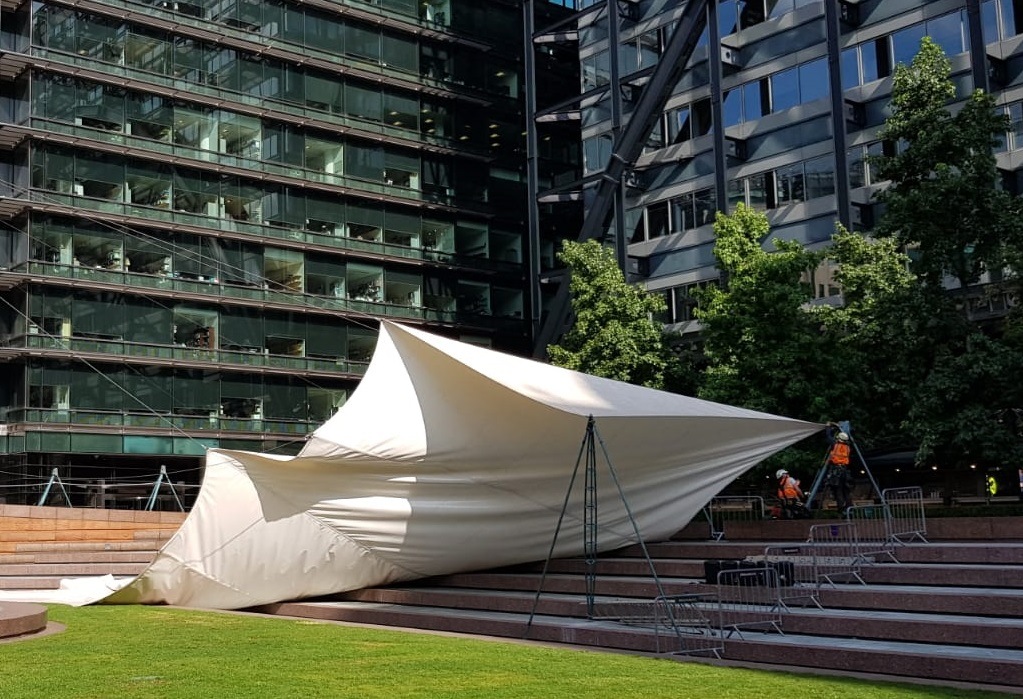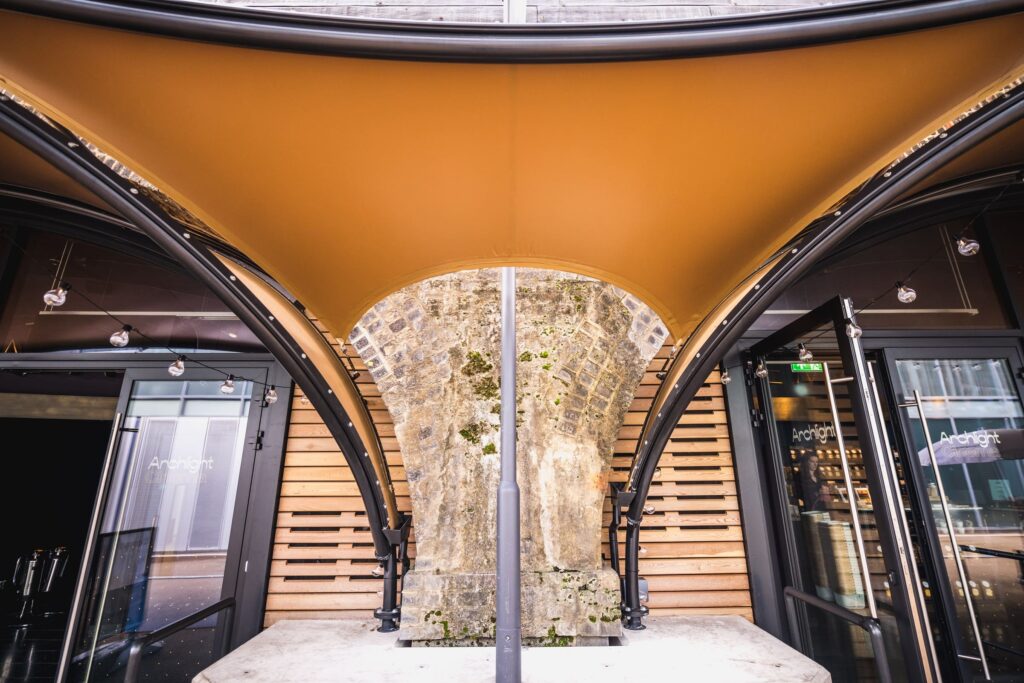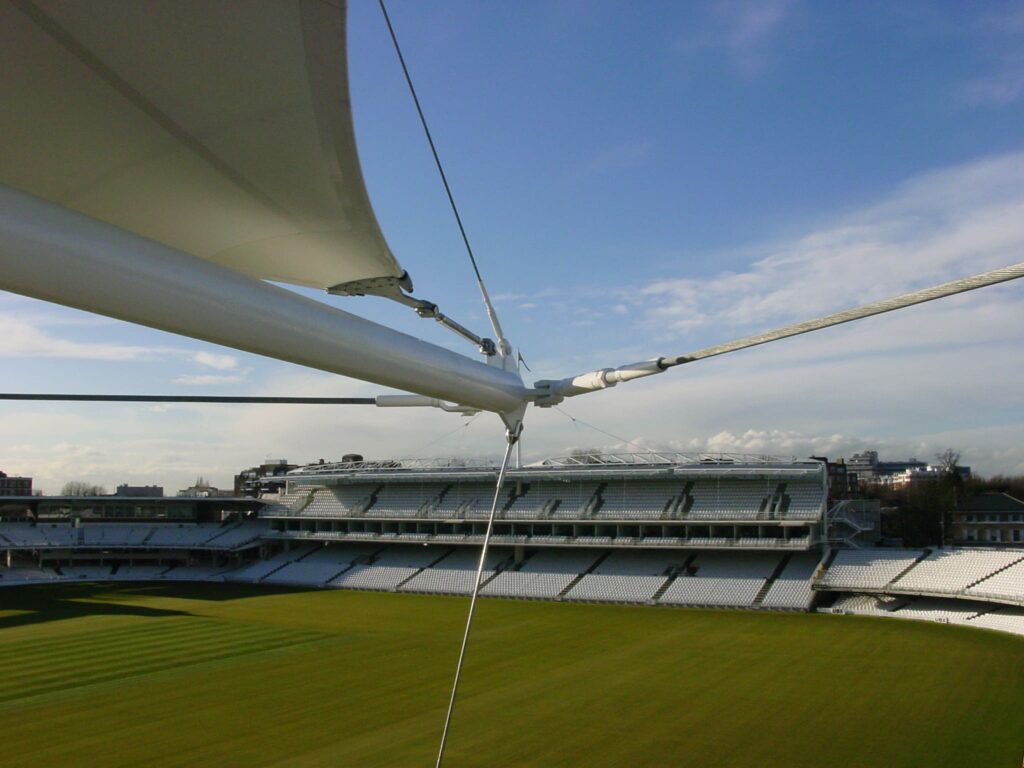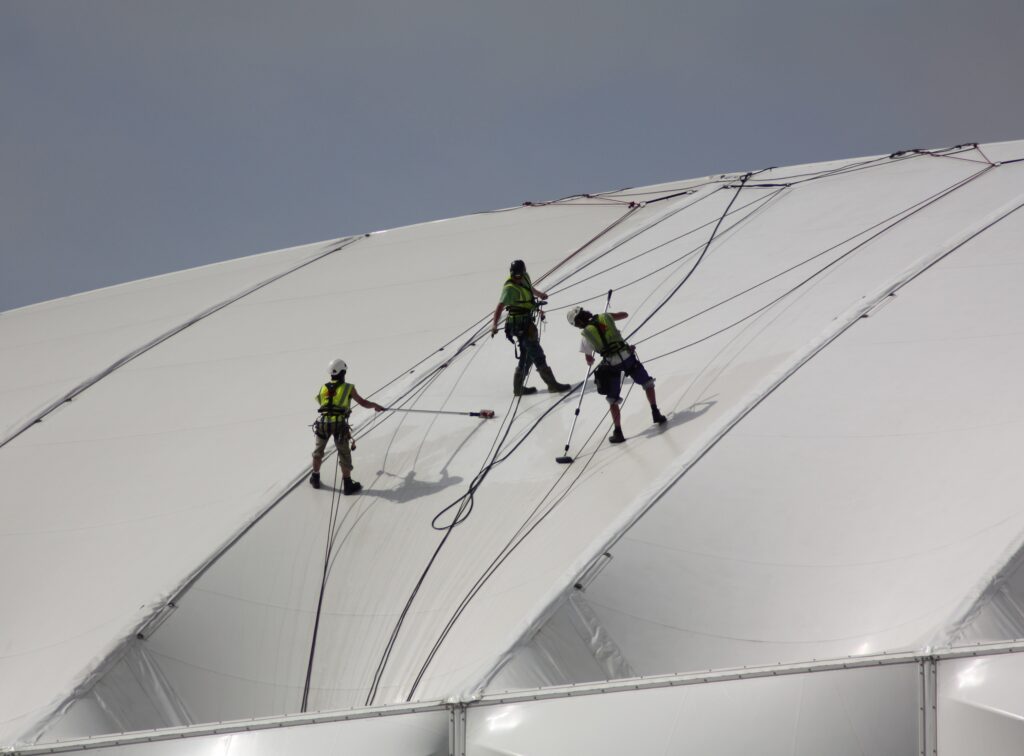
One of our key environmental objectives is zero waste to landfill. When working on the early stages of a fabric structure, this is a key objective for the structures that requires a number of considerations from the outset to achieve. We ensure the fabric lifespan is as long as it can be, this includes ensuring we use high quality fabric, an expert selection of connection details to achieve the lifespan, making sure we keep the fabric well maintained and giving advice on long-term care of the product. In this blog post, we’ll look at the details of each of those aspects that help us achieve zero landfill waste.
Choosing the right fabrics & connection details
Part of the process is choosing a fabric that is going to have a lifespan most suited to its purpose, and one that can be easily recovered and renovated at the end of its use. We can help advise on the right material to use for a variety of different situations, meaning not only will that fabric have a longer lifespan but it’ll also do its job efficiently and effectively. The quality of tensile fabrics are improving all the time and many are created using far more sustainable methods which means their overall effect on the environment is lower.
Specification of the connection details is of paramount importance when aiming to maximise the lifespan of the structures. It requires expert knowledge of the properties of the fabric and movement inherent within the design to understand the bespoke requirements for each structure. Our team are able to ensure that the right components are sourced that provide the structure with its best chance of achieving the design life.


Installation processes
If we want structures to have a ‘second life’ after their current use is over, we need to be able access them easily and ensure there are simple yet safe solutions in place for their installation, removal, renovation and subsequent relocation.
Therefore future plans for the structure are considered during the installation planning phase to ensure the most practical access is available and that the fabric can be removed safely and in a re-useable form.
Good maintenance
This, possibly more than anything, helps extend the lifespan of our fabrics and does a lot to ensure they don’t get sent to landfill unnecessarily. For a relatively low annual cost, fabric canopies and structures can be kept in great shape – looking the part and importantly not being allowed to degrade beyond saving. Good maintenance of fabrics ensures they stay weather-resistant, secure, safe and attractive.

Reusing & Upcycling of Fabrics
If a fabric canopy has gone beyond being useful in a certain situation, we’ll look to remove it, renovate it and clean it, and use it elsewhere. There are a number of ways we do this find solutions ranging from working with local events, community centres and projects, charities and even our own employees, from using PVC to keep homeless people warm to lining employees shed roofs to protect against the wet winter weather getting in. We WILL find a solution for it, clean it, renovate it or upcycle it, and use it elsewhere
For more information on fabric re-use and examples of where we have done this, see our blog; how we re-use our fabric structures.

It is important to get solid advice and guidance before installing a fabric structure, as the wrong type of fabric or installation could mean unsalvageable damage beyond the point of repair – which is of course not only bad for the environment but a waste of money meaning delays to the project and avoidable additional costs.
If you’d like to book a consultation with one of our tensile fabric experts, contact us to see how we can help.
2nd March 2020









